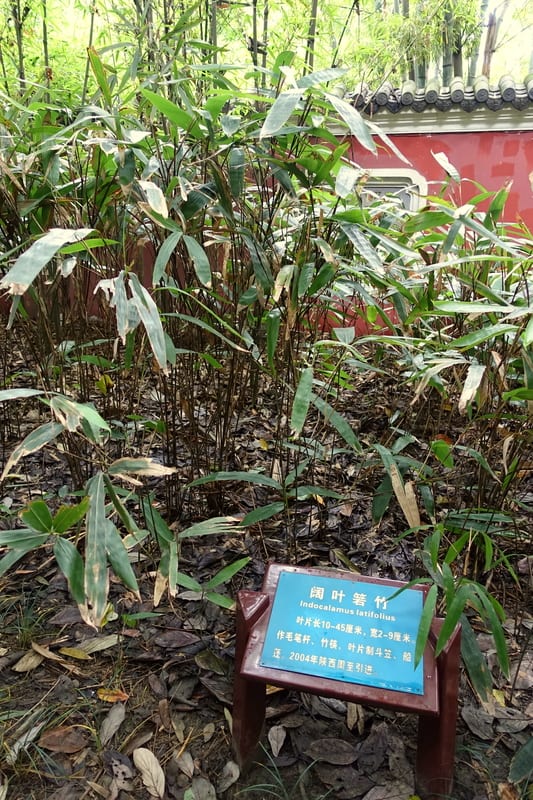Broadleaf Bamboo, Kanzan Chiku (though this primarily refers to cultivars)
Indocalamus latifolius

🌿 Morphology
🌞 Growing conditions
🌍 Origin and family
🌾 Uses
Warning: Despite the care taken in writing this sheet, it is essential to cross-reference sources before using or consuming any plant. When in doubt, consult a qualified professional
Permaculture uses
Broadleaf Bamboo is primarily used as an ornamental plant, hedging, and for creating dense screens or windbreaks. The broad leaves are sometimes used for wrapping food or as a temporary roof covering. While some bamboo shoots are edible, Indocalamus latifolius is not typically cultivated for food. The strong culms can be used for light construction or crafting. Its dense growth can help prevent soil erosion on slopes.
Permapeople description
Indocalamus latifolius is a species of bamboo native to China. It is known for its large leaves.
Botanical description
Indocalamus latifolius is a species of bamboo native to Japan and China. It is characterized by its exceptionally broad leaves, typically reaching lengths of 12-24 inches and widths of 2-4 inches, much larger than most other bamboo species. The culms are relatively short, usually growing to a height of 6-10 feet and a diameter of 0.5-1 inch. It spreads by rhizomes, forming dense clumps or colonies. The plant is evergreen and prefers moist, well-drained soil in partial shade to full sun. Flowers are rare and infrequent.
Companion planting
Indocalamus latifolius generally does well with other shade-tolerant plants. Avoid planting it near plants that require full sun and dry conditions. Its dense growth can compete with the root systems of smaller plants. It can be used to create a sheltered environment for more delicate shade-loving species.
Propagation methods
Indocalamus latifolius can be propagated by division of rhizomes or by culm cuttings. Rhizome division is best done in spring or early summer. Culm cuttings should be taken from mature culms and rooted in a moist, well-draining medium. Seed propagation is possible but infrequent due to rare flowering events.
History and traditions
In Japan and China, Indocalamus latifolius has been traditionally used for ornamental purposes in gardens and as a source of material for crafting. The large leaves have been used for wrapping food items. While not a primary food source, its historical significance lies more in its aesthetic appeal and utility in landscaping.
Usage calendar
The best time for planting is in the spring or early summer. Rhizome division is also ideally performed in spring. Pruning to control growth or shape can be done at any time of year, but is best performed after the main growing season in late summer or fall. New shoots emerge primarily in spring.
